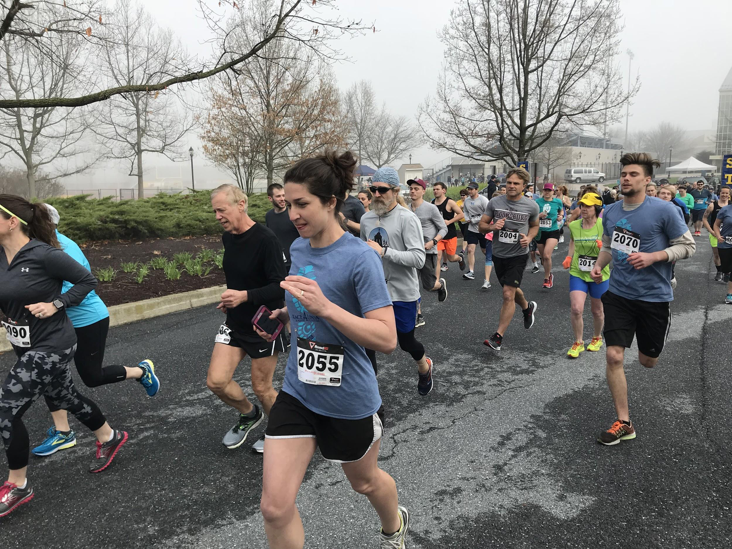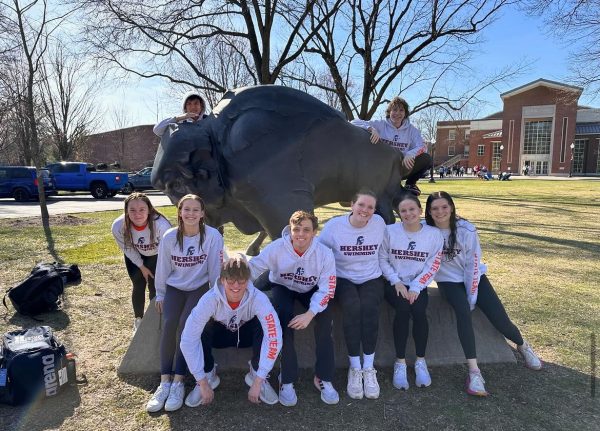Race 4 Linda Raises Funds and Brings Awareness for Scleroderma Research
May 14, 2018
It afflicts about 50,000 Americans.
Scleroderma is “a group of rare diseases that involve the hardening and tightening of the skin and connective tissues,” according to the Mayo Clinic. A local 5k race, the Race 4 Linda, raises donations for scleroderma research.This year’s Race 4 Linda took place on April 28th, 2018 at the Henry Hershey Field on Milton Hershey grounds.
Organizers, participants, and volunteers all gathered together to raise awareness for scleroderma, show support, and raise donations for scleroderma research. This event is not solely about the race and the disease; it is about the people.
The Race 4 Linda was founded by Megan Hayman, a former-English-now-Math teacher at Hershey Middle School and the overall race coordinator, and her family following her mother Linda’s death due to scleroderma in 2009. They realized that people were completely unaware of the disease, and they wanted to change that fact. Nearly 300,000 people have scleroderma in the United States according to the Scleroderma Foundation of the Delaware Valley’s informational pamphlet.
Hayman said her favorite part of the race is “that moment of seeing everybody standing in that semicircle and announcing the start and seeing all the support.”
The male and female overall winners for the 2018 Race 4 Linda were Tommy Johnson and Andie Demko. Johnson, a tenth grader at Hershey High School, was the overall winner of the 5k with a time of 19:26, and Demko was the overall female winner with a time of 19:56. She is a senior at Hershey.
However, this race was not just about the running for them. They and their friends participated because they are friends with Hayman, and they believe in the cause.
Scleroderma is an autoimmune disease that affects the organs of the body, and there are two types: systemic sclerosis and localized scleroderma.
Systemic sclerosis begins by affecting the skin, and the hands are described as being the first body part to undergo the change. Then the disease spreads to different organs.
Localized scleroderma affects a certain part of the body, most usually the skin, and it does not spread to other body parts.
In both types, the tissue of the organ becomes rigid with scar tissue. This occurs because scleroderma causes the immune system to not recognize itself and begins attacking.
Currently, there is no known cause for scleroderma, and only the symptoms can be treated. There is no cure yet.
The donations that the Race 4 Linda collects go towards scleroderma research which is searching for the cure, cause, and other treatment. The Scleroderma Foundation also provides support for those with the disease and education to those who want more information about scleroderma.
It is safe to say that the majority of the runners race because of the support they want to give to Hayman and to scleroderma research. Only a few race for the times.
Becky Bunnell, who has been a volunteer from the very beginning, said that she volunteers “because it’s a really great cause, and Megan is one of my really good friends.”
That is what a fundraising race strives for—complete support for the cause. And this support that everyone feels creates a sense that they are really initiating a change.
Emily Katzaman, a health coach, talked about scleroderma at her station on race day. Unfortunately, the Scleroderma Foundation could not attend, but Katzaman stepped up and took their place. The funds from the Race 4 Linda go to the Scleroderma Foundation of the Delaware Valley.
It is important to know about scleroderma since it is better to be diagnosed earlier rather than later. According to Katzaman, it can take between six to ten years to recognize an autoimmune disease, and in that time the disease is already affecting the body.
Awareness of the existence of scleroderma can help a person to recognize warning symptoms and seek a doctor’s opinion. The Race 4 Linda helps out with this in a very special way as compared to informational pamphlets.
Katzaman said, “The race is one of a kind still because of Megan’s family putting it together in honor of her mom.” Katzaman is talking about the passion for the cause and the comfortable atmosphere of the race.
Most of the attendees have not experienced the direct effects of scleroderma as a person with the disease or a loved one of someone who did, but everyone has great empathy for those who have.
Emma Melhorn, a 5k runner this year and a co-worker of Hayman, said, “I like all of the energy surrounding the race.”
Holly Etzweiler, a one mile fun walk participant this year, has been at every race since the start, and this shows her determination to find a cure. Her sister and daughter both have the disease, so this event is very significant for her. Etzweiler walks to show her support for people suffering from scleroderma and to raise donations for scleroderma research.
The Race 4 Linda has already achieved their goal of raising awareness. People have told Hayman, “‘I never knew what [scleroderma] was.”
Hayman has recognized an increase in knowledge of the disease in Hershey Middle School. Since she is a seventh grade teacher, many middle school students drop by to ask questions about the race and scleroderma.
While the Race 4 Linda has increased the level of awareness for scleroderma, there was one major challenge this year. Many other races were occurring on the same day, and they took away attendees from the Race 4 Linda. The Race Against Racism was scheduled for that day as well. Mainstream issues like racism and cancer gain more attention, so runners are more likely to attend events for those.
Even though the total amount of attendees decreased, the spirit of community did not. This year ran more smoothly than any other year because, as Hayman said, “We know the groove, and it has been 20 percent less work.”
Hayman has high aspirations for the Race 4 Linda. She hopes that the race will become as popular as Ben and Tim Day.
As Etzweiler said, “It’s a great event to raise awareness for a little known disease.”





